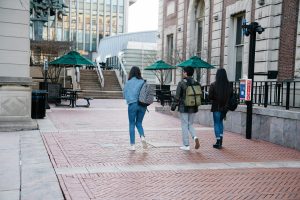The school of the future will look completely different from the past
When we think of the traditional school setting, we often imagine rows of desks, a chalkboard at the front of the room, and a teacher standing at the head of the class. However, as technology advances and the way we learn evolves, it’s safe to say that the school of the future will look completely different from the past. In this article, we’ll explore some of the major changes and innovations that we can expect to see in the schools of the future.
Interactive Learning Spaces
Gone are the days of passive learning and one-size-fits-all teaching methods. The school of the future will be a hub of interactive learning spaces, designed to encourage collaboration, exploration, and critical thinking. Instead of the traditional desks and chairs, you can expect to see flexible seating options, such as bean bags, standing desks, and even outdoor learning areas.
Virtual and Augmented Reality
One of the most exciting developments in education is the integration of virtual and augmented reality into the classroom. These technologies allow students to immerse themselves in virtual worlds, bringing the curriculum to life in a way that was never before possible. Virtual reality can transport students to historical events, far-off locations, or even microscopic environments, providing a hands-on and engaging way to learn.
Personalized Learning
The school of the future will also cater to individual student needs, with the help of artificial intelligence and personalized learning programs. Instead of a one-size-fits-all approach, students will have access to personalized curriculums and learning materials that are tailored to their strengths, weaknesses, and interests. This will allow for a more efficient and effective learning experience, as each student can progress at their own pace.
Multidisciplinary Learning
In the past, subjects were often taught in isolation, with little connection between them. However, in the school of the future, we can expect to see a more holistic approach to education. Students will have the opportunity to explore topics that span multiple disciplines, allowing them to make connections and see the world in a more interconnected way. This will not only enhance their understanding of different subjects but also encourage creativity and innovation.
Emphasis on Soft Skills
In addition to academic subjects, the school of the future will also prioritize the development of essential soft skills, such as communication, collaboration, and critical thinking. These skills are becoming increasingly important in the professional world, and schools will play a crucial role in preparing students for success in their future careers. From group projects to problem-solving activities, students will have plenty of opportunities to hone their soft skills in the classroom.
Flexible Learning Environments
The traditional school schedule of nine to five, five days a week, will also see a significant transformation. With the help of technology, students will have the flexibility to learn at their own pace and in their own time. This could mean a combination of in-person and online learning, allowing for a more flexible and personalized approach to education. This could also benefit students who have other commitments outside of school, such as part-time jobs or extracurricular activities.
Global Connections
Thanks to technology, the school of the future will have no geographical boundaries. Students will have the opportunity to connect with peers and experts from around the world, breaking down cultural barriers and gaining a global perspective. This will not only enhance their learning but also prepare them to thrive in a globalized workforce.
In Conclusion
The school of the future is a space that fosters collaboration, personalization, and flexibility. Technology will continue to play a significant role in shaping the way we learn, and our understanding of education will continue to evolve. As we move towards a more dynamic and interconnected society, it’s essential that our schools evolve with us, preparing students for success in the future.
In conclusion, the school of the future will look completely different from the past, incorporating interactive learning spaces, personalized learning programs, multidisciplinary learning, and flexible environments. These changes will benefit students by providing a more engaging, effective, and relevant educational experience. So let’s embrace the possibilities and look forward to an education system that prepares students for the ever-changing world ahead.










